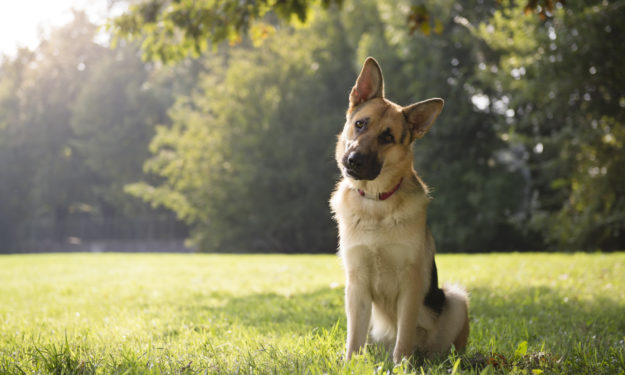Laryngeal Paralysis in Dogs: Symptoms & How It Sounds

Written by Kurt S. Schulz, DVM, DACVS
Laryngeal paralysis is a common upper respiratory disease of dogs. It most often affects large breed dogs such as Labrador retrievers and Golden retrievers but it can affect any dog of any breed or size. Normally when a dog inhales the larynx (voice box) opens to allow air into the trachea and lungs. The larynx closes between breaths to prevent food and water from going into the trachea and lungs. In laryngeal paralysis the muscle that opens the larynx stops functioning. This results in a very narrow passageway to get air into the lungs instead of the normal wide-open larynx. Dogs with laryngeal paralysis have difficulty inhaling and the harder they try the more difficult it becomes to inhale adequate air.
- Normal laryngeal opening during inhalation.
- Laryngeal opening in a dog with laryngeal paralysis.
- Appearance of the larynx following a tie back procedure.
What are the signs of laryngeal paralysis?
Several signs may suggest that a dog has laryngeal paralysis:
- Harsh breathing – laryngeal paralysis usually leads to a characteristic harsh breathing sound that gets louder with exercise. This noise is caused by air passing through the narrow space in the larynx.
- Voice change – laryngeal paralysis will often cause a change in a dogs bark, making it sound more hoarse.
- Coughing – Some dogs may have a cough with laryngeal paralysis that sounds like it comes from the throat.
- Gagging – Many dogs with laryngeal paralysis may gag when they eat or drink.
How is laryngeal paralysis treated?
Laryngeal paralysis is best treated by surgery. There are several surgical options although one procedure, the “tie-back” is the most accepted and most commonly performed by Board Certified surgeons.
Tie back
In the tie back procedure the larynx is approached through the side of the neck. The failed muscle is then identified and replaced with a suture to permanently open the larynx on one side. This procedure produces the best airway with the least complications of any of the available surgeries.
Partial arytenoidectomy
In this procedure the portions of the larynx that obstruct the airway (the arytenoids) are removed by scissor or laser through the mouth. This procedure is not recommended because of the high risk of scar formation that can severely obstruct the airway.
Castellated laryngofissure
This procedure enlarges the airway through a complicated series of incisions and reconstructions from the underside of the neck. There have been no definitive advantages shown with this procedure and it is rarely performed.
Permanent tracheostomy
A permanent tracheostomy should only be performed when a tie back procedure will not correct the airway obstruction. Dogs with permanent tracheostomies cannot swim and may have other chronic airway complications.


